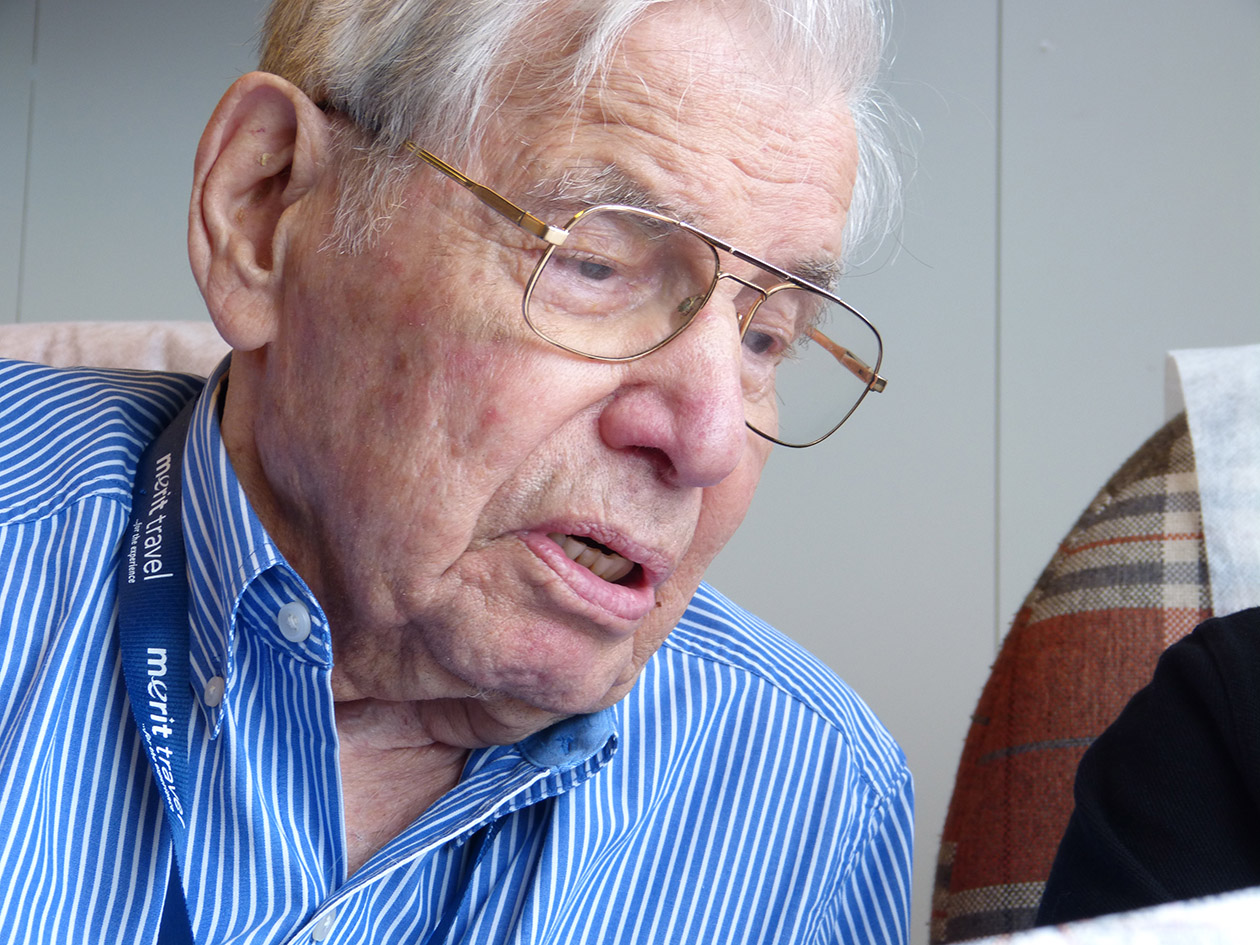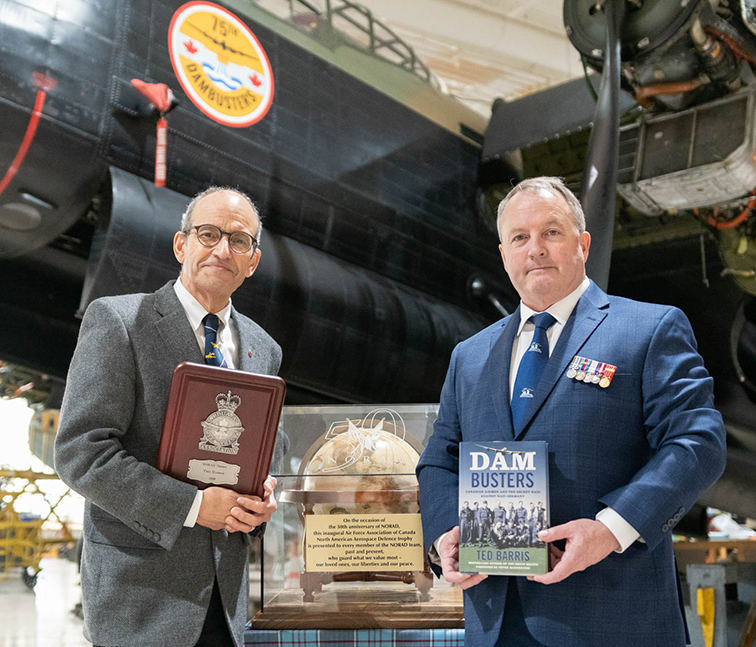
He sat down to rest. He sighed a long, audible sigh. And he smiled with a touch of satisfaction. Around Bill Novick, sat family and some of his fellow travellers gathered, this spring day, at a museum in Normandy, France. They all sensed that Bill had a story to tell: the time, just before D-Day, when his Halifax bomber was coned.
“Enemy gunners at Cologne (Germany) put up a box barrage (concentrated anti-aircraft fire) 3,000 feet high, two miles wide by 10 miles long,” he said. “Searchlights moved all over the sky … and we were coned by the lights. That required evasive action called a corkscrew.” That meant Pilot Officer Novick put the 18-tonne bomber into a violent dive one way, then another, at speeds up to 250 miles per hour to escape the lights and the anti-aircraft fire.
“It was four minutes of sheer terror,” he concluded. “If we were scared, it never entered my mind that I wasn’t going to make it.” (more…)
